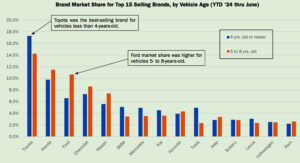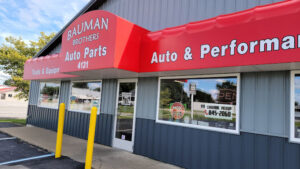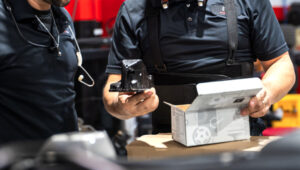SEMA states OEMs should be required to share information for all electronic ADAS equipment and calibration of AEB systems
Diamond Bar, Calif.—SEMA President and CEO Mike Spagnola provided official comments on behalf of the association and its members to the National Highway Traffic Safety Administration (NHTSA) on the proposed Federal Motor Vehicle Safety Standard (FMVSS) on Automatic Emergency Braking (AEB) and Pedestrian Automatic Emergency Braking (PAEB) on all new passenger cars and light trucks weighing up to 10,000 pounds.
NHTSA’s proposed rule would require a vehicle traveling as fast as 62 miles an hour to stop to avoid colliding with a vehicle or pedestrian. Click here to read SEMA’s official comment to NHTSA.
Recognizing AEB systems’ potential to help save lives and reduce injuries, most automakers voluntarily agreed in 2016 to begin installing this technology.
Since NHTSA proposes to create an FMVSS, SEMA members will be impacted by this mandated vehicle safety standard because the National Traffic and Motor Vehicle Safety Act (“Safety Act”) includes a provision known as the “rendering inoperative” provision.
That section prohibits manufacturers, distributors, dealers, and repair shops from knowingly “rendering inoperative,” in whole or in part, any device or element of design installed on or in a vehicle in compliance with an applicable safety standard.
SEMA’s comment asked the agency to provide further clarity on the legal obligations of specialty aftermarket businesses that produce, install, or sell parts that may impact how the AEB and PAEB systems perform. The association notes that NHTSA should require OEMs to share data system specifications (including the vehicle dynamics boundary conditions within which AEB and PAEB systems shall operate), application requirements, and calibration requirements on all electronic ADAS equipment and calibration of AEB systems to ensure that consumers’ vehicles can be safely repaired or modified after the initial point of sale.
“SEMA is committed to ensuring that our member companies have the information and vehicle access that is necessary to manufacture and safely install parts and equipment that accessorizes and customizes vehicles with AEB and PAEB systems,” said Spagnola. “Accordingly, it is imperative that OEM data from testing and system calibration is available and able to accommodate vehicle modifications to maintain compliance with the proposed AEB and PAEB safety standards and any FMVSS adopted in the future.”
- NHTSA’s proposed rulemaking solicited feedback on whether AEB and PAEB should be manually disengaged during certain scenarios.
- SEMA asked that NHTSA allows for manual deactivation at speeds above 6.2 mph under a spectrum of circumstances (the proposed rule doesn’t require AEB and PAEB under 6.2 mph), both on-road and off-road, including when vehicles operate in four-wheel drive or other low-traction driving scenarios such as off-road or inclement weather.
- SEMA’s comment also notes that a vehicle towing a trailer without an independent brake system may cause jack-knifing or other dangerous conditions when AEB engages with a system that has not been tested to ensure it can adapt to scenarios where the vehicle is towing or loaded with cargo over stock weight. NHTSA’s 2008 final rulemaking for Electronic Stability Control (ESC), FMVSS No. 126, allowed for disengagement, including many of the reasons SEMA listed for why drivers may need to disengage the technology.
NHTSA anticipates the rule to be finalized by the end of 2023. The agency proposes to phase in the rule over three years and would provide an additional year for small-volume manufacturers, final-stage manufacturers, and alterers to comply. SEMA’s comment requested that the agency provide two additional years to implement the rulemaking to ensure that the proposed standards are achievable for both automakers and aftermarket businesses to ensure compliance.
For more information, contact Tiffany Cipoletti at tiffanyc@sema.org.













Comments are closed.